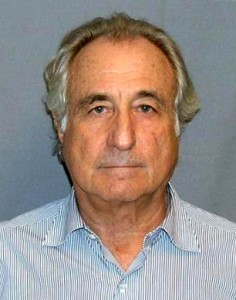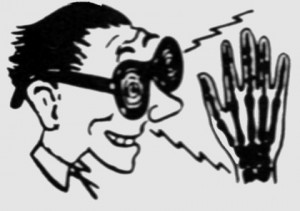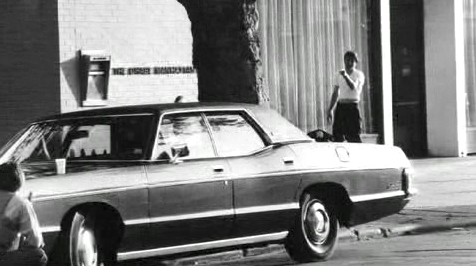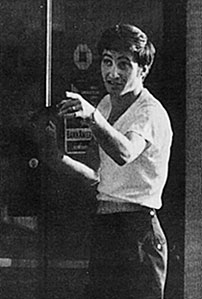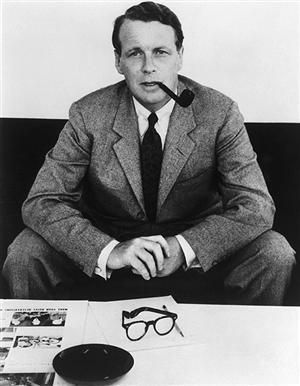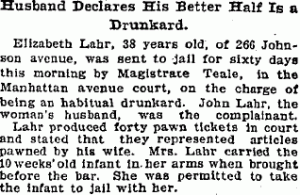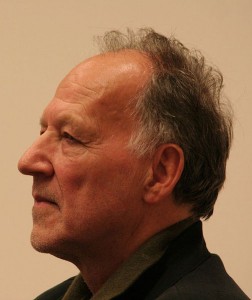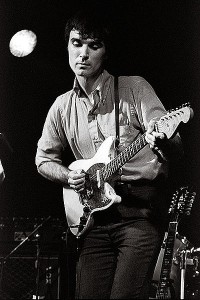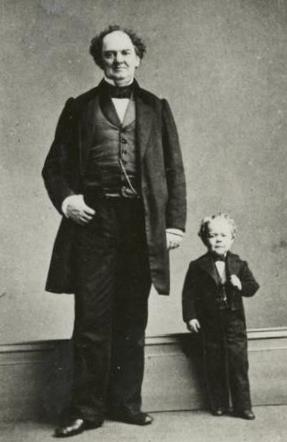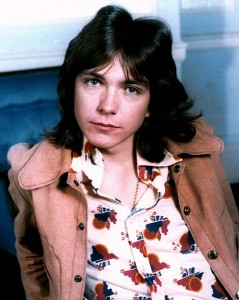Where to start? Crappy 1973 sexploitation film with Chuck Norris (that’s him at the 43-second mark) and an evil clown. Holy smokes.
You are currently browsing the archive for the Urban Studies category.
Tags: Chuck Norris
ABSOLUTELY BILLIANT! (World Wide)
I posses the knowledge, of an absolutely brilliant affiliate marketing program literally worth BILLIONS (hence: my term Billiant) that can be distributed world wide, have perpetual and unlimited residual income, massive social appeal, while at the same time, providing compassionate support for animal rights and prevention of cruelty to animals.
Here’s the deal.
I have the vision, the foresight, and the plan, man.
However, I don’t have the funds and technical support (at this moment) to make this happen quickly enough for my ambition.
I can do it alone over the next 6 to 12 months.
However, I’d rather not wait that long.
I am willing to share this highly exclusive opportunity with the right person or persons.
Think… “Groupon, Facebook, Google”.
Think… “Getting in on the ground floor”
Think… ”Global”
Think…”Billions$$$”
Sounds like Bullshit?
It sure does.
Then go away.
But if this interests you in any way, shape, or form, this is how it needs to work.
I don’t have time to waste with “tire kickers” and under funded opportunists looking for the next “get rich quick” scheme.
This is not a “get rich quick” scheme“.
No indeed!
This is a “get FILTHY rich quick” scheme.
And by scheme, I mean a visionary, life altering opportunity to create a tremendous amount of good in the world, with substantial, mutually rewarding, financial benefits.
Utilizing the vast potential of mobile social media, and the human compassion to help alleviate animal suffering, I have created a win-win-win situation for all concerned.
And I don’t want someone who’s just looking to get rich, I want someone who is already very wealthy, and just wants to do the right thing, the fun and rewarding thing, the “add some meaning to my life” kind of thing.
Someone who would think nothing about throwing a few thousand dollars (the cost of a good dinner in NYC) at an intriguing opportunity for my time and transportation to meet and discuss our future calling.
I can prove who I am, what I do, and where I intend to lead.
If you have the resources, are legitimate, respectable, and worthy of my attention and this opportunity, let’s get together.
At the very beginning, in 1914, in “Making a Living.”
From a 1972 Candice Bergen article in Life magazine, on the occasion of Chaplin nervously returning to America to receive an honorary Oscar 20 years after he was denied entry into the country: “He boarded the plane to Los Angeles with great ambivalence. After agreeing in January to come for the Academy Awards, he felt–as the time grew closer–that he could not go through with it. The memories of what he was put through there were too painful. The thought of returning terrified him.
During the flight, he crossed to the other side of the plane to see the Grand Canyon. His face lit up. ‘Oh yes, this is the place where Douglas Fairbanks did a handstand on the precipice. He told me about it.’
As they got nearer Los Angeles, he grew more and more nervous, sure he shouldn’t have come.”
Tags: Charlie Chaplin
According to a Telegraph report, Brazilian police will be outfitted with eyeglasses that can scan 400 faces per second, identifying persons of interest with speed and ease. An excerpt:
“Military Police officials from Sao Paulo and Rio de Janeiro, which will both host key games in the World Cup, have been given demonstrations of how the device works.
Major Leandro Pavani Agostini, of Sao Paulo’s Military Police, said: ‘It’s something discreet because you do not question the person or ask for documents. The computer does it.
“To the naked eye two people may appear identical but with 46,000 points compared, the data will not be beaten.”
Tags: Leandro Pavani Agostini
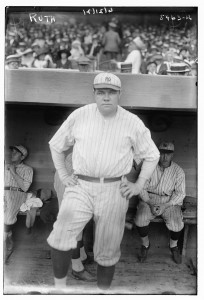
"Angell is the grand master of the first-hand observation, which is why his baseball writing in T"he New Yorker" is so original and lively and has been for 50 years." (Image by George Grantham Bain.)
The opening of “Still at the Top of His Game,” Michael Bamberger’s excellent new Sports Illustrated appreciation of nonagenarian New Yorker legend Roger Angell, who continues to write some of the most eloquent and incredibly visual sentences you could ever hope to read:
“Roger Angell’s memories of Babe Ruth at Yankee Stadium are moving pictures in his head, deposited there when he was a boy absorbed by the pastime and the world around him. The Babe’s big bat, his heavy flannel uniform, the men in fedoras watching him: You and I, way late to the party, have been fed these black-and-white snaps by PBS specials and Hall of Fame exhibits, but that’s not the case for Angell. For him, they’re in color. Angell is the grand master of the first-hand observation, which is why his baseball writing inThe New Yorkeris so original and lively and has been for 50 years.
They say if you watch baseball long enough you’ll see something you’ve never seen before. Maybe that’s what has kept Roger—he’d invite you to call him that—so young, the promise of what the next game might bring. Reading him, you’d never guess his age. He’s 90.
Whatever he wrote in hisNew Yorkerblog last week, you won’t see anywhere else. His pieces get published, on the magazine’s website and in its pages, with no predictable pattern, and every time you come across one, it’s a delight. If you want a traditional ode to the new season, don’t read Angell. Only once, in 1963, did he compare the return of newspaper box scores in April to spring flowers. Only once, in 1988, did he call Bart Giamatti, then the president of the National League, a ‘career .400 talker.’ Only once did Angell compare Tim Lincecum’s stride to ‘a January commuter arching over six feet of slush.’ That was last year.
In his little 20th-floor office in the sleek Condé Nast building in Times Square, Angell—trim and fit in the tweedy uniform of the gentleman farmer—has a pile of Mead spiral-bound notebooks.”
Tags: Michael Bamberger, Roger Angell
Great find by Brendan Koerner (via Longform) in digging up “The Boys in the Bank,” the September 1972 Life magazine article about the unusual Brooklyn heist that inspired Dog Day Afternoon, the amazing 1975 film by the recently deceased Sidney Lumet.
From Life: “By now, John Wojtowicz wants to talk to the police. He wants to talk about negotiations, about hostages, about producing a plane which will carry him to distant places. But more than this, he wants to talk to the person who matters most of all. As worried married men will do, he asks to be allowed to talk to his ‘wife.’ The police send a squad car to the mental ward of a nearby hospital and pick up a 26-year-old male named Ernest Aron.
There was nothing in John Wojtowicz’s early years to suggest that he would ever find himself holding off police at the doors of a bank and haggling with them for a meeting with a homosexual spouse. For most of his 27 years his life seemed pointed to nothing more than a routine job, a faithful female wife, and someday a move to the suburbs.
His mother, Theresa, remembers a good boy who didn’t smoke, rarely drank. He played softball, collected stamps, and carefully clipped out newspaper stories about politics. He finished Erasmus High School with a 97% average, shining in math and mechanical drawing. His favorite extracurricular activity was Monopoly.
Only an occasional flare-up of temperamental rage marred an otherwise studious and pedestrian mind. It seemed right to his moth- er that her son should take a job in a bank directly after high school and that he should find a girl friend-and an eventual wife -who was also a bank employee. The first Mrs. John Wojtowiez was loud, jolly Carmen Bifulco, a typist at the Chase Manhattan Bank. She playfully called her husband a dingbat. He dubbed her in return a ‘mouth.’ The couple met on a bank-sponsored ski trip to Massachusetts, were engaged as Wojtowicz was drafted and shipped to Vietnam, and were finally married just as soon as he got back to Brooklyn, safe and sound, one year later. And then the trouble began.”
Tags: Brendan Koerner, Ernest Aron, John Wojtowicz
Even someone like myself who isn’t very fond of animation can be awed by the nightmarish creations in this video. (Thanks Singularity Hub.)
Tags: John Nolan
Advertising legend David Ogilvy (of Ogilvy & Mather, of course) shares trade secrets with David Susskind in 1974. For better or worse, Ogilvy introduced market research to the movie business, which began way back in the days of Gary Cooper and Betty Grable.
From a Time magazine article about advertising in 1962: “Advertising is salesmanship—it is not fine art, literature or entertainment,’ insists David Mackenzie Ogilvy, 51, chairman of Manhattan’s Ogilvy, Benson & Mather. Yet it is Ogilvy’s flair for creating ads that are literate and entertaining while tugging at the purse strings that has made him the most sought-after wizard in today’s advertising industry. It was Ogilvy who immortalized Hathaway shirts with Baron Wrangel’s eyepatch and bearded Commander Whitehead for Schweppes. Cultivated, charming and handsome enough to model occasionally in his own ads, British-born David Ogilvy studied history at Oxford, served a Depression stint as a chef in a Paris hotel, and sold stoves door to door in Scotland before coming to the U.S. to work for Pollster George Gallup. When he set up his agency in 1948, Ogilvy made a private list of the five clients he wanted most: General Foods, Bristol-Myers, Campbell Soup, Lever Bros, and Shell. Today he has some business from all five, and his agency’s billings ($47.5 million last year) are almost eight times greater than a decade ago. Recently he was selected by Washington to sing the charms of the U.S. to prospective tourists from Britain, France and West Germany. ‘Every advertisement I write for the U.S. Travel Service,’ he muses, ‘is a bread-and-butter letter from a grateful immigrant.'”
Tags: David Ogilvy, David Susskind
From the January 24, 1900 Brooklyn Daily Eagle:
“Elizabeth Lahr, 38 years old, of 266 Johnson avenue, was sent to jail for sixty days this morning by Magistrate Teale, in the Manhattan avenue court, on the charge of being an habitual drunkard. John Lahr, the woman’s husband, was the complainant.
Lahr produced forty pawn tickets in court and stated that they represented articles pawned by his wife. Mrs. Lahr carried the ten weeks’ old infant in her arms when brought before the bar. She was permitted to take the infant to jail with her.”
Tags: Elizabeth Lahr, John Lahr, Magistrate Teale
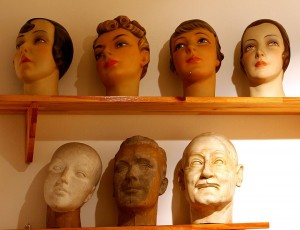
"He never greeted the judges when he passed them on the street – everyone looked similarly blank to him – and he developed a reputation for arrogance.," (Image by Przykuta.)
The opening of “Face Blind,” a 2007 Wired article by Joshua Davis about a neurological disorder that makes face recognition difficult–a confusing condition I myself have, though not quite as severely as the people in this article:
“BILL CHOISSER WAS 48 when he first recognized himself. He was standing in his bathroom, looking in the mirror when it happened. A strand of hair fell down – he had been growing it out for the first time. The strand draped toward a nose. He understood that it was a nose, but then it hit him forcefully that it was his nose. He looked a little higher, stared into his own eyes, and saw … himself.
For most of his childhood, Choisser thought he was normal. He just assumed that nobody saw faces. But slowly, it dawned on him that he was different. Other people recognized their mothers on the street. He did not. During the 1970s, as a small-town lawyer in the Illinois Ozarks, he struggled to convince clients that he was competent even though he couldn’t find them in court. He never greeted the judges when he passed them on the street – everyone looked similarly blank to him – and he developed a reputation for arrogance. His father, also a lawyer, told him to pay more attention. His mother grew distant from him. He felt like he lived in a ghost world. Not being able to see his own face left him feeling hollow.
One day in 1979, he quit, left town, and set out to find a better way of being in the world. At 32, he headed west and landed a job as a number cruncher at a construction firm in San Francisco. The job isolated him – he spent his days staring at formulas – but that was a good thing: He didn’t have to talk to people much. With 1,500 miles between him and southern Illinois, he felt a measure of freedom. He started to wear colorful bandannas, and he let his hair grow. When it got long enough, he found that it helped him see himself. Before that, he’d had to deduce his presence: I’m the only one in the room, so that must be me in the mirror. Now that he had long hair and a wild-looking scarf on his head, he could recognize his image. He felt the beginnings of an identity.
It gave him the confidence to start seeing doctors. He wanted to know if there was something wrong with his brain. His vision was fine, they told him – 20/20. One doctor suggested he might have emotional problems and referred him to a psychiatrist. In the medical literature, there were a few reports of head-injury and stroke victims who’d lost their ability to recognize faces. No one, as far as the doctors knew, had ever been born with the condition.
Conventional medicine, in other words, got him nowhere. So Choisser posted a message about his experiences on a Usenet group devoted to people with neurological problems. His subject line was ‘Trouble Recognizing Faces.’ After a few months, in late 1996, he received a solitary reply. ‘Hello, Bill,’ the email began, ‘I read what you wrote, and I think I have what you have.'” (Thanks Longreads.)
Tags: Joshua Davis
Squatter punks in London in 1983 are the focus of this smirking Aussie doc.
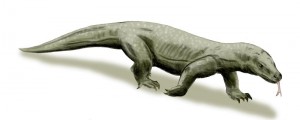
"It belongs to a species of gigantic lizards supposed to have been extinct many thousand years." (Image by Arthur Weasley.)
Iowa was overrun by giant, hog-eating lizards in 1885, and the Brooklyn Daily Eagle was only too happy to reprint ridiculous stories about them. An excerpt from a January 10 article of that year:
“A monster animal was killed near Oskaloosa, in this state recently. It measured from one end of tail to tip of nose eighty-one feet. Its heart weighed eight pounds and had four cavities. After being hunted for a long while it was finally killed with a twelve pound cannon loaded with railroad spikes. It required a team of twelve strong men to pull the monster to the river bank after its death.
It was skinned and a taxidermist is stuffing it, when it will be sent to the Academy of Natural Sciences at Philadelphia. The flesh is being carefully removed from the bones, and the skeleton will be properly wired and kept for the present on exhibition at Oskaloosa. Dr. Peck, of Davenport, calls it the Cardiff Giant, and says it belongs to a species of gigantic lizards supposed to have been extinct many thousand years.
The monster had been swallowing farmers’ hogs weighing 300 to 400 pounds each at one gulp. Thousands of people have been gunning for the monster, but it was proof against everything until the cannon brought it down.–Newton (Ia.) Herald“
want to buy crapiest looking car-no joke (almost any where)
My town is screwing with my perfectly good car that needs work for an inspection, but they want me to get rid of it instead. So I am fighting back. I want a car that can pass a NY inspection and have it sit in my driveway. It has to be an eye sore. These people have so much money and they are trying to push me out of my home. I work for the government and they gave me a 2 year salary freeze. So please help me. As long as the car can be registered and inspected they can’t do anything to the car.
From Japan, of course. (Thanks Singularity Hub.)
Physicist Lawrence Krauss probes the nexus between art and science in a conversation with one of my favorite novelists, Cormac McCarthy, and one of my favorite filmmakers, Werner Herzog. Listen here. (Thanks Open Culture.)
••••••••••
From Herzog’s look at the dark side of revolution, Even Dwarfs Started Small:
Tags: Cormac McCarthy, Werner Herzog
“Nothing But Flowers”
Here we stand
Like an Adam and an Eve
Waterfalls
The Garden of Eden
Two fools in love
So beautiful and strong
The birds in the trees
Are smiling upon them
From the age of the dinosaurs
Cars have run on gasoline
Where, where have they gone?
Now, it’s nothing but flowers
There was a factory
Now there are mountains and rivers
you got it, you got it
We caught a rattlesnake
Now we got something for dinner
we got it, we got it
There was a shopping mall
Now it’s all covered with flowers
you’ve got it, you’ve got it
If this is paradise
I wish I had a lawnmower
you’ve got it, you’ve got it
Years ago
I was an angry young man
I’d pretend
That I was a billboard
Standing tall
By the side of the road
I fell in love
With a beautiful highway
This used to be real estate
Now it’s only fields and trees
Where, where is the town
Now, it’s nothing but flowers
The highways and cars
Were sacrificed for agriculture
I thought that we’d start over
But I guess I was wrong
Once there were parking lots
Now it’s a peaceful oasis
you got it, you got it
This was a Pizza Hut
Now it’s all covered with daisies
you got it, you got it
I miss the honky tonks,
Dairy Queens, and 7-Elevens
you got it, you got it
And as things fell apart
Nobody paid much attention
you got it, you got it
I dream of cherry pies,
Candy bars, and chocolate chip cookies
you got it, you got it
We used to microwave
Now we just eat nuts and berries
you got it, you got it
This was a discount store,
Now it’s turned into a cornfield
you got it, you got it
Don’t leave me stranded here
I can’t get used to this lifestyle
Tags: David Byrne
Like a reverse Molotov cocktail.
David Grann recently published an excellent piece in the New Yorker about a mysterious death in Guatemala. Here’s the opening of another great article for the same magazine, 2010’s “The Mark of a Masterpiece,” about an Oxford professor who authenticates art:
“Every few weeks, photographs of old paintings arrive at Martin Kemp’s eighteenth-century house, outside Oxford, England. Many of the art works are so decayed that their once luminous colors have become washed out, their shiny coats of varnish darkened by grime and riddled with spidery cracks. Kemp scrutinizes each image with a magnifying glass, attempting to determine whether the owners have discovered what they claim to have found: a lost masterpiece by Leonardo da Vinci.
Kemp, a leading scholar of Leonardo, also authenticates works of art—a rare, mysterious, and often bitterly contested skill. His opinions carry the weight of history; they can help a painting become part of the world’s cultural heritage and be exhibited in museums for centuries, or cause it to be tossed into the trash. His judgment can also transform a previously worthless object into something worth tens of millions of dollars. (His imprimatur is so valuable that he must guard against con men forging not only a work of art but also his signature.) To maintain independence, Kemp refuses to accept payment for his services. ‘As soon as you get entangled with any financial interest or advantage, there is a taint, like a tobacco company paying an expert to say cigarettes are not dangerous,’ he says.
Kemp, who is in his sixties, is an emeritus professor of art history at Oxford University, and has spent more than four decades immersed in what he calls ‘the Leonardo business,’ publishing articles on nearly every aspect of the artist’s life. “
Tags: David Grann, Leonardo Da Vinci, Martin Kemp
From the New York Times obituary of the former schoolteacher who made a mint by selling David Cassidy and Leif Garrett to infatuated adolescent girls:
“Charles Laufer, who as a high school teacher in 1955 despaired that his students had nothing entertaining to read and responded with magazines aimed at teenage girls desperate to know much, much more about the lives of their favorite cute stars, died April 5 in Northridge, Calif. He was 87.
The cause was heart failure, his brother, Ira, said.
Mr. Laufer’s best-known magazine was Tiger Beat, published monthly. With its spinoff publications and its competitors, of which the most popular was 16 Magazine, Tiger Beat had it all covered — or at least what mattered most to girls from about 8 to 14. The Beach Boys’ loves! Jan and Dean’s comeback! The private lives of the Beatles!
Exclamation points, sometimes as many as 50 a page, added emphasis. Pix, as pictures were known, were glossy, glamorous and frequently poster-size. Fax, as facts were known, often included ‘101 things you never knew about (fill in star’s name)’: he uses a blue toothbrush!”
Tags: Charles Laufer, David Cassidy, Leif Garrett
Piaget tests showing the Preoperational stage. Soon it will all be clear to them. (Thanks Reddit.)
Tags: Jean Piaget
Man of Many Trades For Hire (Williamsburg)
I am between jobs and looking for odd ones. Big or small, weird or mundane, I am at your service! I am looking for unusual jobs (maybe erotic) to perform when nothing but a handsome interesting guy with many skills will do. Prospective employers: JUST ASK.
Dutch artist Theo Jansen creates self-propelling sculptures that he calls “Strandbeests,” which are fashioned from recycled plastic tubing and bottles. The “creatures” are left on the shore to fend for themselves, using the wind to “walk.” Jansen wowed the crowd with this TED Talk several years ago.
Tags: Theo Jansen

"Backing them up will be an all-star cast of freaks, every one of them stoned." (Image by HammondCast.)
Before moving to his longstanding homestead in Aspen, Colorado, Hunter S. Thompson lived in Berkeley and was eyewitness to the Hippie phenomenon. An excerpt from “The ‘Hashbury’ Is The Capital of the Hippies,” Thompson’s account from the front lines of flower power and its brutally quick commodification, which ran in the May 14, 1967 New York Times:
“Those hippies who don’t work can easily pick up a few dollars a day panhandling along Haight Street. The fresh influx of curiosity-seekers has proved a great boon to the legion of psychedelic beggars. During several days of roaming around the area, I was touched so often that I began to keep a supply of quarters in my pocket so I wouldn’t have to haggle for change. The panhandlers are usually barefoot, always young and never apologetic. They’ll share what they collect anyway, so it seems entirely reasonable that strangers should share with them.
The best show on Haight Street is usually on the sidewalk in front of the Drog Store, a new coffee bar at the corner of Masonic Street. The Drog Store features an all-hippy revue that runs day and night. The acts change sporadically, but nobody cares. There will always be at least one man with long hair and sunglasses playing a wooden pipe of some kind. He will be wearing wither a Dracula cape, a long Buddhist robe, or a Sioux Indian costume. There will also be a hairy blond fellow wearing a Black Bart cowboy hat and a spangled jacket that originally belonged to a drum major in the 1949 Rose Bowl parade. He will be playing the bongo drums. Next to the drummer will be a dazed-looking girl wearing a blouse (but no bra) and a plastic mini-skirt, slapping her thighs to the rhythm of it all.
These three will be the nucleus of the show. Backing them up will be an all-star cast of freaks, every one of them stoned. They will be stretched out on the sidewalk, twitching and babbling in time to the music. Now and then somebody will fall out of the audience and join the revue; perhaps a Hell’s Angel or some grubby, chain-draped impostor who never owned a motorcycle in his life. Or maybe a girl wrapped in gauze or a thin man with wild eyes who took an overdose of acid nine days ago and changed himself into a raven. For those on a quick tour of the Hashbury, the Drog Store revue is a must.” (Thanks Kevin Kelly.)
Tags: Hunter S. Thompson
From Italian television. The Fab Four was accompanied by Mia Farrow and Donovan. No Monkees were there, but lots of actual monkeys were. The whole trip to find enlightenment at the feet of the Maharishi Mahesh Yogi didn’t pass the stink test, but the footage is still amazing.
Tags: Beatles, Donovan, Maharishi Mahesh Yogi, Mia Farrow

